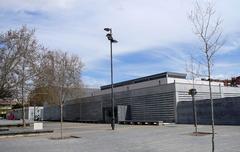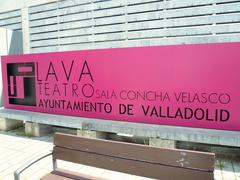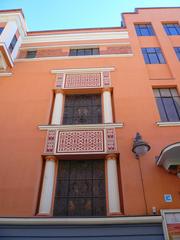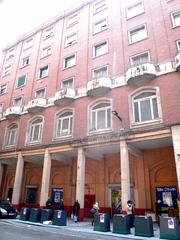
National Sculpture Museum Valladolid: Visiting Hours, Tickets, and Historical Sites Guide
Date: 03/07/2025
Introduction
Located in the heart of Valladolid, Spain, the National Sculpture Museum (Museo Nacional de Escultura) is a premier destination for art lovers and history enthusiasts. Housed in the magnificent Colegio de San Gregorio, a late 15th-century Isabelline Gothic architectural gem, the museum boasts one of the world’s most significant collections of Spanish polychrome sculpture, spanning from the Middle Ages to the 19th century. Founded in 1842 during Spain’s secularization period, its mission was to safeguard religious art endangered by the disentailment of church properties. Over time, the museum has expanded its collection and modernized facilities while preserving its historic character.
Visitors can explore masterpieces by renowned artists such as Gregorio Fernández, Alonso Berruguete, and Juan de Juni. The museum is also closely tied to Valladolid’s famous Semana Santa (Holy Week) processions, lending its sculptures as “pasos” for this vibrant tradition. The museum complex combines historic courtyards and cloisters with contemporary architectural enhancements, making it fully accessible and welcoming for all visitors (Nomads Travel Guide; Turismo Castilla y León; The Crazy Tourist).
This guide provides a complete overview of visiting hours, ticket options, collection highlights, architectural insights, and practical tips—ensuring an enriching and memorable visit.
Table of Contents
- Origins and Historical Context
- Collection Development and Highlights
- Architectural Evolution: Old and New
- Visiting Hours and Tickets
- Accessibility, Tours, and Visitor Experience
- Nearby Attractions
- FAQs
- Plan Your Visit
- References
Origins and Historical Context
The museum’s roots are deeply entwined with Spain’s religious and cultural development. The Colegio de San Gregorio, built between 1484 and 1496, is a stunning example of Isabelline Gothic architecture. Founded as a theological college by Alonso de Burgos, it stands today as an architectural and historic landmark.
In 1842, the National Sculpture Museum was established to preserve religious artworks threatened by the secularization of church assets. Valladolid’s central location and wealth of ecclesiastical art made it the ideal home for the collection. The museum has been permanently housed in the Colegio de San Gregorio since 1933, with subsequent expansion into adjacent historic buildings.
Collection Development and Highlights
Early Collections and Religious Focus
The museum’s foundation collection comprised religious sculptures and altarpieces from monasteries, convents, and churches, primarily from the Gothic, Renaissance, and Baroque periods. Its polychrome wood sculptures—created by masters like Gregorio Fernández, Juan de Juni, and Alonso Berruguete—are key highlights, celebrated for their realism and expressive power.
Growth and Modernization
Through the late 19th and 20th centuries, the collection expanded via donations, government acquisitions, and purchases. Additional works include processional floats, choir stalls, retablos, paintings, goldsmithery, and textiles. Modern conservation and restoration workshops ensure the preservation of these fragile masterpieces.
Artistic Significance
- Gregorio Fernández’s “Lying Christ” (Cristo Yacente): Noted for anatomical precision and emotional depth.
- Alonso Berruguete’s “Sacrifice of Isaac”: Exemplifies the transition from Gothic to Renaissance.
- Juan de Juni’s “Entombment of Christ”: Celebrated for dynamic movement and expressive intensity.
Semana Santa “Pasos”
Each year, more than 100 sculptures from the museum participate in Valladolid’s Semana Santa processions, connecting the institution’s heritage to contemporary living traditions (The Crazy Tourist).
Architectural Evolution: Old and New
Historic Setting
The core of the museum is the Colegio de San Gregorio, featuring a richly ornamented Gothic façade, cloister, and grand halls. The building’s atmosphere and architecture enhance the viewing experience, creating a dialogue between art and its setting (Arquitectura Viva).
Modern Expansion
Recent interventions by architects Fuensanta Nieto and Enrique Sobejano have provided new terraced exhibition rooms, improved accessibility with ramps and elevators, and created a seamless blend between historic and modern spaces. The complex also includes the Palacio de Villena and Casa del Sol, used for temporary exhibitions and educational programs.
Visiting Hours and Tickets
Opening Hours
- Winter (October–April): Tuesday–Sunday, 10:00 AM – 6:00 PM
- Summer (May–September): Tuesday–Sunday, 10:00 AM – 8:00 PM
- Closed: Mondays, January 1, May 1, December 25
Hours may vary on public holidays; always verify on the official website before visiting.
Ticket Prices
- General Admission: €6
- Reduced Admission (students, seniors, large families): €3
- Children under 18: Free
- Free Admission Times: Saturdays (4:00–7:30 PM), Sundays (10:00 AM–2:00 PM), and special dates such as International Museum Day and National Day of Spain (WhichMuseum).
Tickets can be purchased online or at the museum entrance. Online booking is recommended during peak periods.
Accessibility, Tours, and Visitor Experience
Accessibility
The museum is committed to accessibility, with wheelchair-friendly entrances, ramps, and elevators. Some historic spaces may have limited access; visitors with special needs should contact the museum in advance for assistance (WhichMuseum).
Guided Tours and Events
Guided tours in Spanish and English are available and offer deep insights into the collection and architecture. Booking in advance is recommended. Temporary exhibitions and educational workshops are offered year-round, with special events during Semana Santa.
Photography
Photography (without flash) is permitted in most areas. The courtyard and façade are especially popular for photos. Flash, tripods, and professional equipment are generally restricted.
Nearby Attractions
- Teatro Calderón: One of Spain’s oldest theaters (Adventure Backpack).
- Museo de Valladolid: Exhibits on archaeology and fine arts (The Go Guy).
- Cervantes Museum: Dedicated to Miguel de Cervantes.
- Campo Grande Park: Ideal for a post-visit stroll.
The museum’s central location means plenty of cafés and restaurants are nearby, perfect for sampling traditional Castilian cuisine.
Frequently Asked Questions (FAQ)
Q: What are the National Sculpture Museum’s opening hours?
A: Tuesday–Sunday, 10:00 AM–6:00 PM (winter) or 8:00 PM (summer); closed Mondays and select holidays.
Q: How much are tickets?
A: General admission is €6; reduced rates and free times are available.
Q: Are guided tours available?
A: Yes, in Spanish and English. Advance booking recommended.
Q: Is the museum accessible for visitors with mobility issues?
A: Yes, with accessible facilities and assistance available if requested.
Q: Can I take photos in the museum?
A: Yes, but without flash and in accordance with museum guidelines.
Plan Your Visit
For the latest information, ticket reservations, and details about current exhibitions, visit the official National Sculpture Museum website. Enhance your visit with audio guides available through the Audiala app, and follow the museum on social media for updates and special events.
Consider pairing your museum visit with a tour of Valladolid’s historical sites, and explore the city’s lively food and culture scene.
Summary and Visitor Tips
The National Sculpture Museum in Valladolid is an indispensable stop for anyone interested in Spanish art, history, or architecture. From its world-class collection of polychrome sculptures and historic Gothic setting to its integration with living traditions like Semana Santa, the museum offers a compelling and immersive experience. With flexible visiting hours, affordable ticket options, accessible facilities, and expert-led tours, the museum welcomes visitors of all backgrounds. For up-to-date information, visit the official museum website, and enrich your journey with the Audiala app and our related travel resources (Nomads Travel Guide; Turismo Castilla y León).
References and Official Links
- Nomads Travel Guide
- The Crazy Tourist
- Turismo Castilla y León
- Adventure Backpack
- Eduardo Chillida Official Site
- Arquitectura Viva
- WhichMuseum
- The Go Guy





